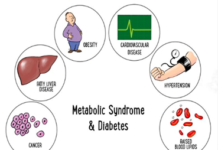Polio, or poliomyelitis, is a viral disease that affects the nervous system, potentially causing paralysis or death. With the widespread use of polio vaccines, cases have significantly declined. However, individuals who survived polio may later develop Post-Polio Syndrome. PPS is not caused by the reactivation of the poliovirus but is believed to be related to the degeneration of motor neurons.
Symptoms
- New muscle weakness: Often in muscles that were previously affected by polio.
- General fatigue: Extreme tiredness or a feeling of exhaustion that may be debilitating.
- Muscle atrophy: Gradual wasting or shrinkage of muscles.
- Muscle and joint pain: Discomfort in previously weakened or overcompensating muscles.
- Breathing or swallowing difficulties: In severe cases, particularly if polio affected the muscles used for these functions.
- Cold intolerance: Difficulty regulating body temperature, particularly in response to cold environments.
- Sleep disturbances: Such as sleep apnea or disrupted sleep due to pain or muscle weakness.
Causes
The exact cause of PPS is not entirely understood, but it is thought to result from the gradual degeneration of motor neurons that were damaged by the original polio infection. During the initial recovery from polio, surviving motor neurons sprout new fibers to compensate for those lost to the virus. Over time, these overworked neurons may break down, leading to the onset of PPS.
Treatment
There is no cure for Post-Polio Syndrome, but treatments focus on managing symptoms and improving quality of life:
- Physical therapy: Gentle exercises to strengthen muscles without overexertion.
- Medications: Pain relievers, anti-inflammatory drugs, or other treatments to manage muscle pain and fatigue.
- Assistive devices: Use of braces, canes, or other tools to help with mobility and reduce stress on weakened muscles.
- Lifestyle modifications: Energy conservation techniques, such as pacing activities and taking frequent rests, can help reduce fatigue.
- Breathing support: In cases where respiratory muscles are affected, devices like non-invasive ventilation may be used.
- Counseling and support: Psychological support for coping with the physical and emotional challenges of living with PPS.
Prevention
Since PPS affects individuals who have already had polio, the best prevention is the eradication of polio through vaccination. Polio vaccination prevents the initial infection and therefore eliminates the risk of developing PPS later in life. For polio survivors, prevention of PPS may involve:
- Avoiding muscle overuse: Preventing further strain on weakened muscles can help delay the progression of PPS.
- Regular monitoring: Periodic check-ups with healthcare providers to assess muscle function and manage symptoms early.
































